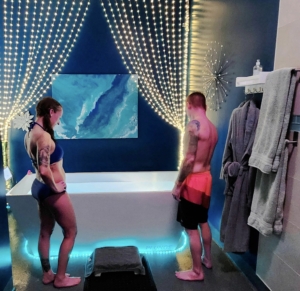What is Cold Plunge Therapy?
Cold-water immersion stimulates blood flow. When you immerse your body in a cold plunge, the blood rushes to surround your vital organs. Your heart is then forced to pump more efficiently, pushing blood through all your vessels and supplying every part of your body with the oxygen and nutrients needed.
Top 5 Cold Plunge Therapy Benefits
Post plunge you’ll feel refreshed, rejuvenated and revived.
FAQs
How does cold plunge therapy work?
It reduces blood flow to a particular area, significantly reducing inflammation and swelling that causes pain, especially around a joint or a tendon. It can temporarily reduce nerve activity, which can also relieve pain.
What are the benefits of cold plunge therapy?
-
Pain management: cold plunge therapy reduces pain by desensitizing nerves and reducing swelling.
-
Inflammation: Inflammation occurs at specific sites within the body, for example, an injury, or can be systemic. Cold therapy reduces localized inflammation from exercise.
-
Depression and Anxiety: Cold therapy can help alleviate depression and anxiety. Research indicates that people with depressive symptoms typically have inflammation.
-
Mood and Brain Function: Cold therapy activates hormonal responses in healthy people as well as those suffering from chronic diseases such as depression, fibromyalgia, and more.
-
Heart Rate Variability: Heart Rate Variability is an indicator of physical and psychological stress. Cold therapy reduces stress and improves exercise recovery times as shown by improved heart rate variability.
-
Vasoconstriction: Cold therapy initiates vasoconstriction of blood vessels in the skin and extremities, which aids in reducing muscle pain, fatigue, and swelling.



